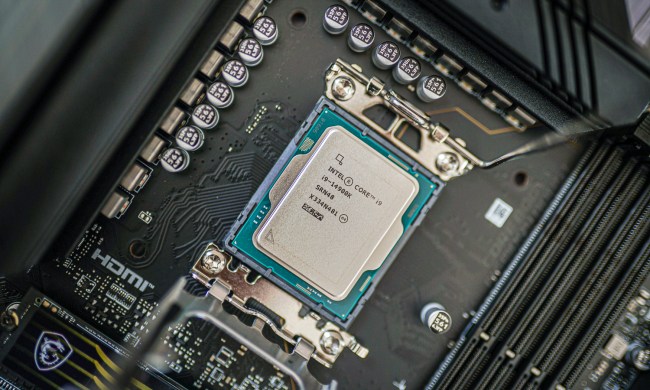A working prototype of Intel’s Larrabee graphics card, the company’s attempt at a hybrid CPU and GPU, has been sold for $5,234.
As reported by Tom’s Hardware, the prototype GPU, which is apparently the only functioning Larrabee graphics card in the world, was sold on eBay France for 4,650 euros ($5,234).

The model is said to be in an operational state, which was confirmed via a screenshot showcasing the BIOS startup screen. However, the seller stated that there are no drivers included. Another screenshot provided on the product’s listing page shows how this specific prototype is an Intel engineering sample that was created for the company’s internal use.
As such, when considering the fact that this may very well be the only working Larrabee GPU currently available, it’s slightly surprising that it didn’t command a higher price. “If you are a serious collector, this is going to be probably your only chance to get this piece of history,” the listing stresses. It’s unclear how the seller, who has a 100% feedback rating on eBay, managed to obtain such a rare PC component, but it seems to be the real deal judging by the pictures.
Initially revealed in 2008, Larrabee was the code name for a general-purpose computing on graphics processing units (GPGPU) chip. This silicon would effectively be able to perform the tasks that are generally handled by a central processing unit (CPU).
Intel essentially wanted to create a board that would offer other functions beyond providing graphical performance in video games. With this in mind, Larrabee could have performed tasks such as real-time ray-tracing and irregular shadow mapping, which standard GPUs at the time were incapable of carrying out.

Under the hood, as PC gamer points out, Larrabee is powered by 32 four-way multithreaded cores, a 512-bit vector processing unit, and a 1,024-bit (512-bit bidirectional) memory bus that was required to connect with a system’s memory.
Tom’s Hardware highlights how the architecture Larrabee was based on could have potentially even allowed the GPU to run its own operating system. Ultimately, however, its graphical performance was unable to match or exceed what other cards were offering. Intel decided to cancel the release of Larrabee as a graphics card in 2009.
Tom Forsyth, one of Larrabee’s chief designers, said he is asked about the project fairly regularly. “Every month or so, someone will ask me what happened to Larrabee and why it failed so badly. And I then try to explain to them that not only didn’t it fail, it was a pretty huge success,” he said. The Intel MIC multiprocessor architecture announced in 2010, which Xeon Phi x86 processors are based on, incorporated some of the technology found in the Larrabee board.
Intel’s next discrete graphics product, Arc Alchemist, is due for a release sometime during 2022. Team Blue has high hopes for its upcoming video cards, with the company working toward “getting millions of Arc GPUs into the hands of PC gamers every year.”




